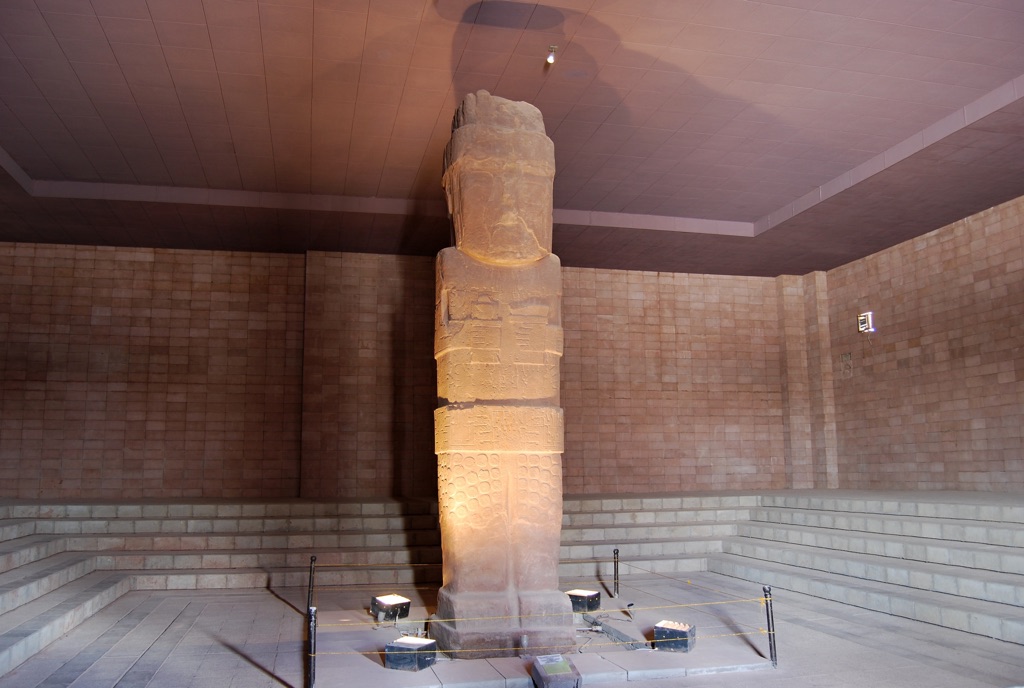The Bennett Monolith, also known as the Bennett Stela, is a significant archaeological artifact from the ancient Tiwanaku civilization of South America. This towering stone monument stands as a testament to the skill and artistry of a culture that thrived around Lake Titicaca in what is now Bolivia. The monolith is named after Wendell C. Bennett, an American archaeologist who conducted extensive research in the region. It is renowned for its intricate carvings, which have intrigued scholars and visitors alike, sparking numerous theories about its purpose and the civilization that created it.
Get your dose of History via Email
Historical Background of Bennett Monolith
The Bennett Monolith was discovered in the early 20th century amidst the ruins of Tiwanaku, an ancient city near Lake Titicaca. Wendell C. Bennett, whom the monolith is named after, played a pivotal role in its study. The Tiwanaku civilization, responsible for its creation, was a dominant force in the Andean region from around 500 to 1000 AD. This culture is known for its advanced stone-working techniques and monumental architecture.
Archaeologists believe the Tiwanaku people built the Bennett Monolith during their civilization’s peak. The monolith’s discovery shed light on the religious and cultural practices of this pre-Columbian society. It stands as a silent witness to the city’s historical significance, which was once a bustling hub of activity and a center for regional trade.
Over the centuries, the site of Tiwanaku fell into decline and was eventually abandoned. The Bennett Monolith, along with other artifacts, was left to the elements. It wasn’t until modern archaeological efforts began that the true value of these relics came to light. The monolith, in particular, has provided valuable insights into the spiritual life of the Tiwanaku people.
Historical records suggest that Tiwanaku was not only a political center but also a place of great spiritual importance. The Bennett Monolith may have played a role in religious ceremonies or served as a marker for astronomical events. Its presence at the site indicates the area’s significance as a sacred space within the Tiwanaku culture.
While the Bennett Monolith remains stationary, its influence travels far and wide. It has become an emblem of the Tiwanaku civilization and a focal point for understanding pre-Columbian history in the Andes. Its legacy continues as researchers and visitors from around the world seek to unravel the mysteries of this ancient culture.
About Bennett Monolith
The Bennett Monolith is a towering figure carved from a single block of andesite, a volcanic rock known for its durability. The monolith stands at an impressive height, showcasing the Tiwanaku civilization’s stone-working prowess. Its surface is adorned with intricate carvings that depict various anthropomorphic and zoomorphic figures, as well as geometric patterns.
The craftsmanship of the Bennett Monolith is a marvel. The carvings are precise and detailed, indicating a high level of skill and artistry. The figures etched into the stone are believed to represent deities or mythological beings significant to the Tiwanaku culture. These images provide a glimpse into the spiritual beliefs and practices of the people who created them.
The methods of construction and transportation of the Bennett Monolith remain a topic of fascination. The Tiwanaku had no known access to iron tools or the wheel, yet they managed to quarry, shape, and move this massive stone structure. This feat suggests a sophisticated understanding of engineering and a well-organized society capable of such monumental projects.
Architectural highlights of the monolith include its symmetrical composition and the harmonious integration of the carved figures with the overall structure. The monolith’s design reflects the Tiwanaku’s cosmological vision and their desire to embody their spiritual beliefs in stone. It stands as a testament to their ability to manipulate natural materials to create enduring works of art.
The Bennett Monolith’s preservation is a priority for historians and conservationists. Efforts to protect and study the monolith continue, as it remains an invaluable source of information about the Tiwanaku civilization. Its presence at the archaeological site of Tiwanaku allows for a deeper understanding of the architectural and cultural achievements of this ancient Andean society.
Theories and Interpretations
Several theories have emerged regarding the Bennett Monolith’s purpose and significance. Some scholars suggest it was used in religious ceremonies, possibly as an idol or a focal point for worship. The carvings on the monolith may have held symbolic meanings, serving as a visual narrative of the Tiwanaku’s cosmology and mythology.
Another theory posits that the Bennett Monolith functioned as an astronomical marker. The Tiwanaku were known for their advanced understanding of astronomy, and the monolith’s placement and carvings could have been aligned with celestial events. This alignment might have been used to track solar and lunar cycles, which were crucial for agricultural practices and religious festivals.
Mysteries still shroud the Bennett Monolith, particularly concerning the identities of the figures carved into its surface. While some carvings are thought to represent specific deities, others remain open to interpretation. The lack of written records from the Tiwanaku civilization means that much of what can be understood about the monolith comes from the stone itself and comparisons with other Andean cultures.
Historical records from neighboring civilizations and later Inca accounts provide some context for interpreting the Bennett Monolith. However, these sources must be used cautiously, as they may reflect the biases and perspectives of those cultures rather than the Tiwanaku’s own views.
Dating the Bennett Monolith has been carried out using various methods, including radiocarbon dating and stratigraphy. These techniques have helped establish a timeline for the monolith’s creation and use, placing it squarely within the Tiwanaku civilization’s period of dominance in the Andean region.
At a glance
- Country: Bolivia
- Civilization: Tiwanaku Empire
- Age: Approximately 1500 years old (circa 500-1000 AD)

